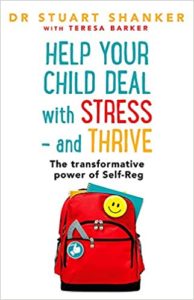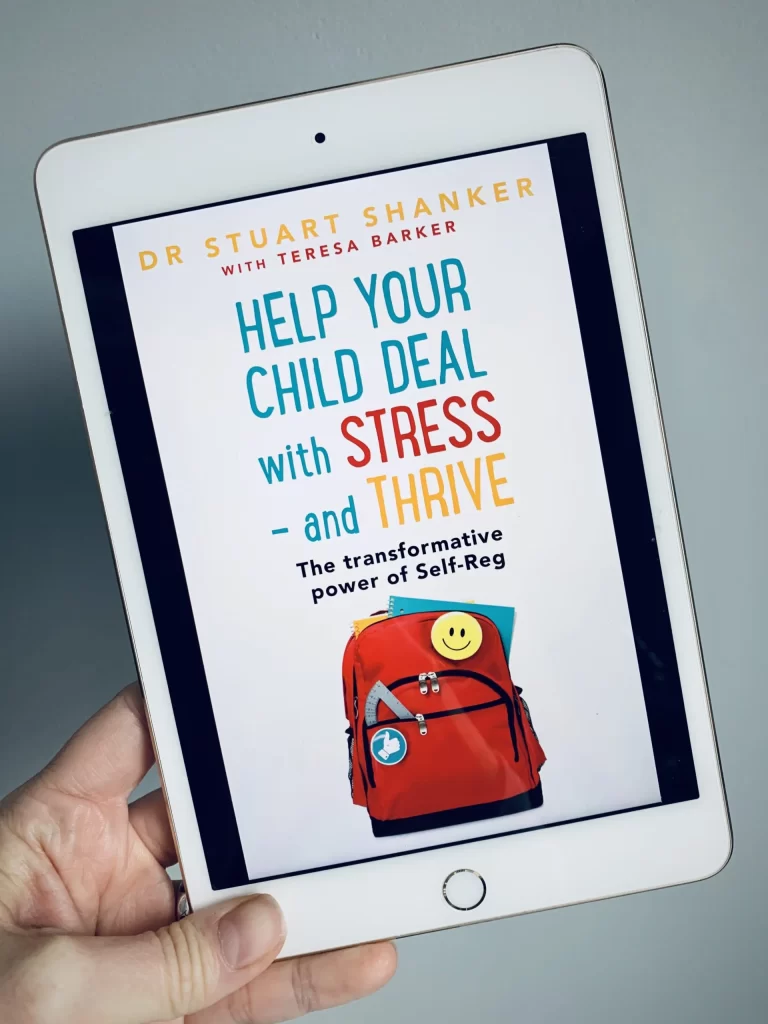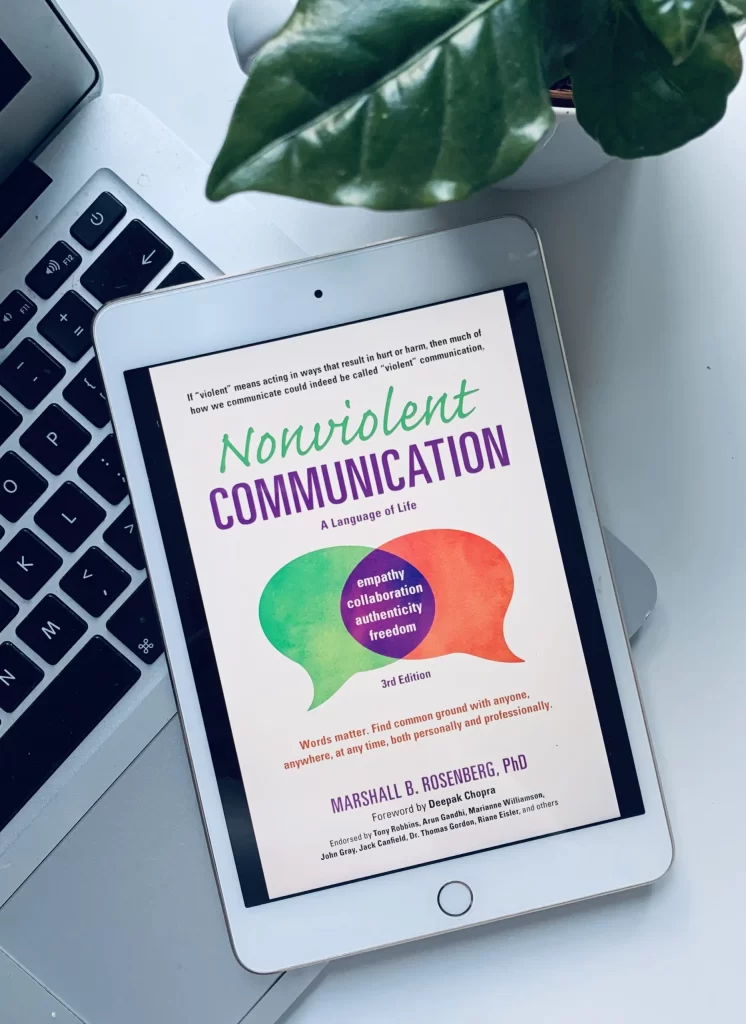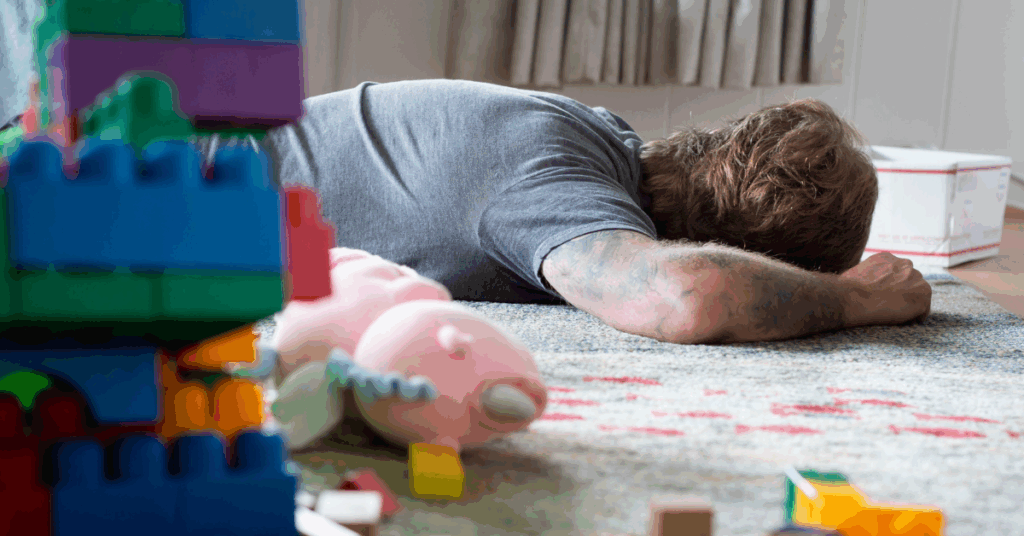 Help Your Child Deal With Stress – and Thrive – Book Summary
Help Your Child Deal With Stress – and Thrive – Book Summary
The transformative power of Self-Reg
American version: Self-Reg: How to Help Your Child (and You) Break the Stress Cycle and Successfully Engage with Life
Stuart Shanker
Yellow Kite (6 Sept. 2018)
About the author:
Dr. Stuart G. Shanker is a research professor emeritus of Philosophy and Psychology at York University and the Founder/CEO of The MEHRIT Centre. He is also the founder and Science Director of the Self-Regulation Institute (SRI), and an acclaimed author and international speaker. He is best known as Canada’s leading expert in the psychophysiological theory of self-regulation.
About the book
“Self-Reg will show you where to stand: how to bring your child’s behavior into focus, respond to your child’s needs, and help your child help himself. It will strengthen your relationships. This is not about getting your child to “behave”—to stop doing or saying things that irritate you or others or create problems for himself. Self-Reg is about making a dramatic difference in mood, concentration, and the ability to make friends, feel empathy, and develop the higher values and virtues that are vital to your child’s long-term well-being.”
That is definitely one of the best parenting books out there, and I cannot recommend it enough – it’s packed with fantastic (and, importantly, science-based) ideas.
Here Dr Shanker takes us deep into the science of self-regulation and stress. He helps us understand how stress affects children’s behaviour and moods and how we, parents, can help them deal with this stress efficiently…and thrive in life! Self-Reg is a very useful tool for adults as well, as it does not only help to manage everyday stress but also promotes self-awareness and conscious living in general, which is essential for our well-being.
In these notes we’ll just cover just a few ideas, so definitely check out the book for more. Let’s jump straight in.
Key insights:
Self-Regulation vs Self-Control
“Self-control is about inhibiting impulses; self-regulation is about identifying the causes and reducing the intensity of impulses and, when necessary, having the energy to resist. This distinction has not been clearly understood; indeed, the two are often conflated. Self-regulation is not only fundamentally different from self-control: It is what makes acts of self-control possible—or, as often happens, unnecessary.”
According to research, self-control (and the ability to delay gratification) is crucial for success in life. However, many people often confuse self-control with self-regulation. And they are fundamentally different. In fact, without self-regulation, it is really hard to control yourself. Therefore, if we want our child to be able to wait for the second marshmallow (remember the famous experiment?), we need him to be able to self-regulate – to have the energy to resist temptation and delay gratification.
Therefore, whenever you crave something (chocolate, junk food, watching TV, etc.), the first question to ask is “Why am I craving it now?”. Or when your child throws a tantrum – “Why now?” Most likely, that’s because of the stress draining the energy. And that brings us to the next big idea.
We Need Energy to Manage Stress
“The more aware we are of when we’re becoming overstressed, and know how to break this cycle, the better we self-regulate: in other words, manage the myriad stresses in our lives. The autonomic nervous system (ANS) reacts to stress with metabolic processes that consume energy and then sets in motion compensating processes that promote recovery and growth. The greater our stress load, the more constrained this recovery process, and as a result, the fewer our resources to exercise self-control and the more intense our impulses become. Once you understand the brain’s natural response to stress and practice Self-Reg, the very need to impose self-control often disappears.”
We need to have energy to manage stress. Imagine that we all have an “energy tank”. When it’s full we can direct our energy (“fuel”) in full towards learning and growth. But guess what happens when we face stress? It drains our energy. And if we are low on fuel, we are more vulnerable to negative emotions, it’s harder for us to engage socially, mentally or even physically during the day. When we are stressed and have no energy to manage the stress, we also feel less motivated– we simply get stuck in a survival mode and save energy for basic activities. Our self-control suffers as well (that’s why if children are stressed, they are less likely to wait for the second marshmallow).
Probably, you’ve noticed that it’s much easier to stay calm and not to overreact to your child’s behaviour when your “energy tank” is full (e.g. our mornings are definitely better when I’ve had a good night of sleep ☺).
The same happens to our children. Dr. Shanker offers to look at challenging behaviour in children from a different perspective – challenging behaviour is most likely a sign that a child is under stress and his energy level needs to be topped up. Stress often drives the behaviour.
That brings us to the next big (and practical) idea.
5 Steps of Self-Reg
“Self-Reg is a five-step method for
(1) recognizing when a child is overstressed;
(2) identifying and then
(3) reducing his stressors;
(4) helping him become aware of when he needs to do this for himself;
and (5) helping him to develop self-regulating strategies.”
This is a self-reg process in a nutshell. Let’s get into more details here.
Step 1 – when you notice challenging behaviour in your child, look for the signs that he is overstressed
Stress symptoms – is he crabby, has a lot of trouble falling asleep or staying asleep, gets upset easily, or has troubles paying attention to what you are saying? And then reframe the behaviour – e.g. “He doesn’t actually know what he’s saying or doing: It’s just his way of letting me know that he’s in distress”, or “my child is not giving me a hard time, he is having a hard time”. I think Mona Delahooke’s explanation of three states of arousal (autonomic pathways of responses) in Beyond Behaviours is great visual guidance for this step.
Step 2 – identify the stressors.
Ask, “Why now?” This one is probably the most difficult part – have a think what’s the source of stress that’s triggering your child’s behaviour? Nowadays, that would be probably the whole bunch of different stressors rather than just one stressor, and many of them would not be that obvious. In the book Dr Shanker suggests digging into 5 domains of stress:
- Biological – inadequate nutrition, sleep, or exercise; motor and sensorimotor challenges; noise, sights, touch, smells, and other kinds of stimuli; pollution, allergens, and extreme heat and cold. In fact, these biological factors are the core sources of energy, so they are the first ones to look at;
- Emotional – intense emotions (either positive or negative), new or confusing emotions, and emotional entanglements. Negative emotions drain the energy level and can even block the positive emotions, needed for topping up the energy level.
- Cognitive – “limited awareness of internal and/or external stimuli; sensory information (such as visual, auditory, or tactile) that the child has trouble picking up; sensory experiences that a child has trouble understanding because he can’t see any pattern; too much information or too many steps for him to handle; information presented too quickly or too slowly; information that’s too abstract or presupposes more basic concepts that he hasn’t mastered yet, and requiring a child to concentrate for longer than he’s able”.
- Social – “confusing or demanding social situations, interpersonal conflicts, being the victim of or even just witnessing acts of aggression, and the social conflicts that result from not understanding the impact on others of one’s own actions and utterances.” Even parents’ very own expectations, opinions, or concerns about their child’s social life and friends can add to their child’s stress.
- Pro-social – “stressors include having to deal with other people’s strong emotions, being asked to put the needs of others ahead of one’s own, tension between personal and peer values, moral ambiguity, and guilt.”
There are two tricks here: do not become a stressor yourself and look for patterns in your child’s behaviour. By the way, Dr Shanker says that lack of limits is a stressor and can lead to issues with self-regulation. Check out our notes on Jesper Juul’s great book No! to get more ideas on how to set limits with kids.
Step 3 – reduce the stressors.
Think about how you can eliminate your child’s exposure to a stressor – e.g. if a child is sensitive to noise, remove him from that environment or offer earplugs; if the intense emotions causing the stress – try to help him process these emotions and ease them (name the emotion, help him notice where this emotion is coming from and why they feel this way), and then if possible help your child to shift from negative emotions to positive ones.
By the way, adequate sleep, nutrition and exercise are crucial for successful energy restoration. That’s the foundation for mental, emotional and physical health. So pretty much always that would be the starting point when dealing with stress.
Step 4 – help your child reflect on his feelings and become aware that he is overstressed.
To do this effectively, a child needs to know what it feels like “to be calm” and “to enjoy calm” (a calm child is relaxed, aware of what’s going on inside and around him, and enjoying this state). Self-awareness is the key to self-regulation. The best way to do it is by practising various mindfulness techniques. I think that the SIFT technique from The Whole-Brain Child can be a good way to do it.
Step 5 – help your child respond to the stress and figure out what helps him calm, rest and recover.
Basically, everyone is different and will need different calming strategies to calm down (deep breathing, meditating, going for a walk, taking a nap, etc). The key point here again is to know what “being calm” feels like, and experiment with what exactly brings a child into this place (actually, I really like Mona Delahooke’s guidance on this in her great book Beyond Behaviours – check out our notes).
Children Need Adults to Self-Regulate
“The foundation of Self-Reg is that it is only by being regulated that a child develops the ability to self-regulate. This does not mean “the only way a child will acquire self-control is if we first control him.” Self-Reg is about becoming aware of and enhancing the internal processes of arousal regulation, not behavior management, about the critical role that an adult plays as an “external regulator” of a child’s arousal states until such time as the child is able to manage this on his or her own.”
Dr Shanker argues that whenever a child’s reptilian brain kicks in (when he gets into a fight or flight or freeze response), he needs an adult brain to be able to soothe him. Therefore, the relationship with your child is everything. A child can’t learn self-regulation without experiencing it from an adult in the first place.
Goleman shares a similar idea in his book Emotional Intelligence (check out our notes), where he writes:
“The infant who through countless episodes of being soothed is helped along in learning how to calm down, the speculation goes, will have stronger connections in this circuit for controlling distress, and so throughout life will be better at soothing himself when upset.”
Why is it so? That’s because all humans have a so-called Interbrain – imagine that we have a sort of Bluetooth or wireless connection, which tethers our brain to our child’s brain for purposes of arousal regulation. Basically, the crucial function of the interbrain is to turn the alarm off when something triggers a fight-or-flight response.
That means that we, adults, need to master self-reg ourselves, so we could help our children to manage stress better and teach them self-regulation skills. They need our “non-anxious presence” as the authors of The Thriving Child put it, so they could deal with stress more efficiently.
P.S.: the interbrain is also essential for many executive functions development – check out the book for more.
Children Need Safety for Emotional Growth
“To help our children grow emotionally, we need to help them express what they’re feeling and feel safe doing so. They need to expand their emotional vocabulary and reflectiveness and distinguish the different elements in their emotional responses. They have to learn how to identify their emotional triggers and, as they grow older, understand their emotional vulnerabilities. And they need to develop new emotions and learn how to deal with the new emotional challenges that are part of growing up.”
Emotional intelligence develops when a child feels safe expressing his feelings. As parents, our goal is not to get a child to suppress big emotions (like fear, sadness, anger) or to get him to avoid them at all means. Our goal is to help him expose those feelings to the light of a day, and help him to recognize when that’s a signal that he is overstressed and needs to recover as soon as possible.
Shanker also adds:
“The child’s greatest danger is if he is shamed for his feelings, blamed for a lack of self-control, and punished in ways that only make him more vulnerable to a wider range of negative emotions: feelings of helplessness, worthlessness, melancholy, or even self-hatred.”
That is so important. All feelings are ok – it’s ok to feel scared of a monster under a bed, it’s ok to feel upset when a younger sibling breaks your Lego tower, and it’s also ok to cry when you fell off a bicycle. Let your child confront and deal with strong emotions in a safe environment to build self-regulation and resilience.
P.S.: The feeling of safety is crucial for a child’s development. To switch from a survival brain to a learning brain, a child needs to feel safe and secure (physically, emotionally, and as a learner). If a child doesn’t feel safe, he can’t learn.
Physical Roots of Attention
“For many children having problems paying attention, we start out not with exercises designed to reduce distractibility or improve planning and sequencing but by working on their body awareness, because this is where the ability to focus starts.”
Our body, mind and emotions are all interconnected. A child needs to feel comfortable in his own skin not only to be able to pay attention but also to self-regulate.
To help your child master the different kinds of movements and help him become aware of his sensations, Shanker suggests playing games that involve movement and different sensory activities. Here are some ideas: physically imitate animals (jump like a frog, pretend that you are an elephant and swing your big trunk, etc.); modulate vocalizations (pretend you are a roaring lion or a squeaky mouse); tactile awareness (identify different kinds of substances while blindfolded); olfactory awareness (identify different types of essential oils by smell alone).
P.S.: That’s actually +1 for free play. I was watching our boys playing outside one day – they were building a den, climbing trees, carrying logs and stones, digging holes and then pretending they were a family of otters ☺ In general, free play is a big thing in our house, and I must say that all of the teachers on different occasions complemented on boys’ ability to pay attention for a quite long time.
Teens Need a Group With a Shared Goal
“Teens need small-group activities built around a shared goal that requires dedication, sacrifice, and something greater than self-gratification. They must experience failure as well as success together if they are to develop resilience. But they must experience success as well as failure together if they are to develop the drive to keep going in the face of adversity. A personal sense of identity does not come from a group that does not itself have a strong identity. For that to develop there has to be something encouraging, challenging, and indeed inspiring the group.”
Humans are social animals and for teens, it’s super important to have their squad. Shanker writes that teens (and adolescents) actually need peers to deal with the stress. Best options here – sports clubs, adventure programs, music and drama assembles (online games can work too, but are not the best option – kids need face to face interaction).
Helping a Child Navigate Towards Healthier Behaviour
“The biggest lesson we’ve learned is that you don’t accomplish this goal by trying to persuade a child or teenager to stop eating or playing something that isn’t good for them (good luck with that!). It’s a case of getting kids to recognize how they feel when they do something that reduces their tension and tops up their energy. Once their ERS goes back on standby, cravings quickly change. Now when the need for energy spikes, the hypothalamus searches its memory for favorite sources and finds the healthier option.”
That’s such an important idea. Help your child to become aware of how he feels the morning after playing video games till very late. And then remind him how he feels after playing football with his friends and after a good night of sleep. Let him decide what feels better.
The same tip applies to parents as well – how do you feel after eating the whole bar of chocolate vs a bowl of salad? Or binge-watching TV till midnight vs having a good night of sleep? ☺ And every time you feel the craving, remind yourself about this.
In the book, Shanker also draws on recent research and explains how super stimulants (and there are plenty of them in the modern world) affect kids’ brain and their physical and emotional health. He also shares great tips on how to help your child “tame the beast” and take charge – definitely check out the book for more.
Action steps for you:
- Make sure you and your child eat well, sleep enough and exercise (regular walks in nature are actually the best) – that’s the foundation of self-reg.
- Practice 5 steps of self-regulation yourself, and then teach your child to become aware of his stressors and develop strategies to deal with the stress.
- Focus on building a relationship with your child – check out Laura Markham’s tips in Calm Parents, Happy Kids (our notes are here).
Quotes from the book:









